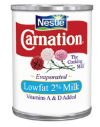How to Make Potato Salad
Thanks to Black Twitter, the world now knows the significance of potato salad to Black Americans. I don't know why this is, or why potato salad, of all foods, but I do know that "Who made the potato salad?" is the first question you ask before making a plate at a cookout. Because you don't eat just anyone's potato salad. But decades before Twitter existed, my mother instilled in me this culinary suspicion and potato salad monotheism: hers was the one true way to make it. She would bring her potato salad to cookouts, baby showers, and other events, even when she wasn’t asked to bring it. People raved about my mother's potato salad and this only reinforced her belief that hers was the only acceptable potato salad and no one else’s would ever measure up.
Dice the potatoes. Cook until firm. Unless you plan to make mashed potato salad. Also put on a pot of eggs to boil. Drain the potatoes and let cool on the counter, and then chill the potatoes and eggs inside the refrigerator. Finely chop some bell pepper and white onions. Don’t be lazy and chop them into hunks. No one wants hunks of bell pepper and onions in their potato salad. If you can’t do it right, then move and I’ll do it. Once the potatoes are cold, chop the boiled eggs. Combine the potatoes and egg in a large bowl with the peppers and onions. Then do all of the following BEFORE stirring—you don’t want to overstir and end up with mashed potato salad: season with Lawry’s, black pepper, and paprika; add mayo, not Miracle Whip; add yellow mustard (this is not white people potato salad); add pickle relish. Stir just enough to blend and coat the potatoes. You should have added enough mustard and paprika so that it is almost day-glo orange and not white like white people potato salad. Sprinkle a little more paprika on top. And serve. You know, I don’t eat anybody’s potato salad except Van’s. She’s the one who taught me how to make it.
I never made potato salad for my mother. Hers was delicious, but I prefer to make mine with less mustard. Or as my mother would say, more like white people’s
- Deesha Philyaw is the co-author of Co-Parenting 101: Helping Your Kids Thrive in Two Households After Divorce, written in collaboration with her ex-husband. Deesha's writing on race, parenting, gender, and culture has appeared in The New York Times, The Washington Post, The Pittsburgh Post-Gazette, FullGrownPeople.com, and elsewhere. At The Rumpus, Deesha inaugurated an interview column called VISIBLE: Women Writers of Color.














